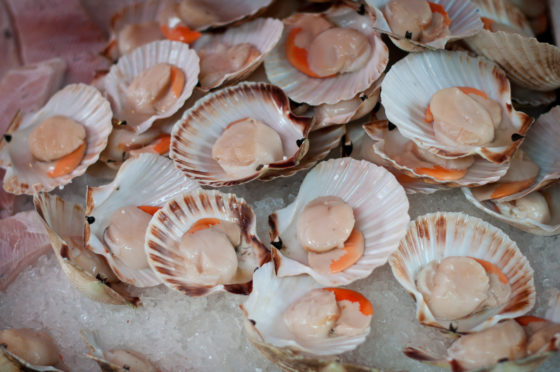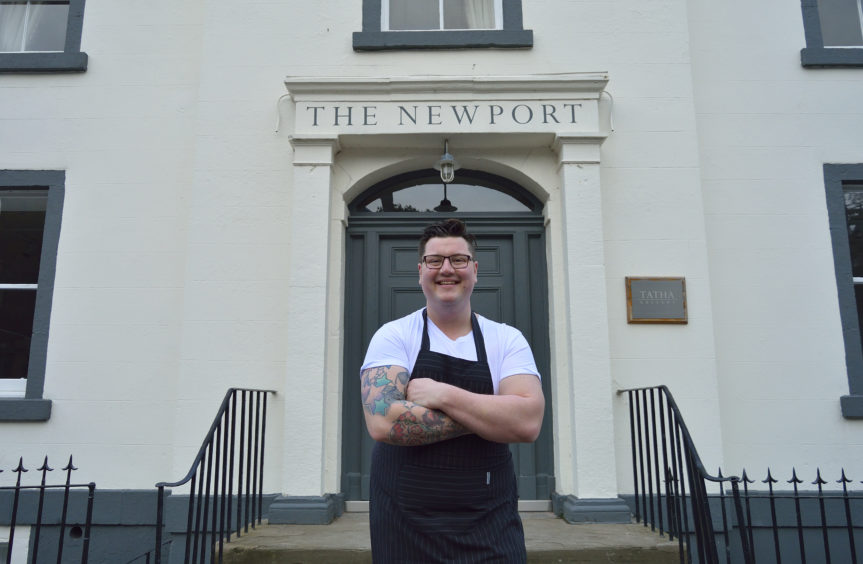Today’s column finds me raving about another of Scotland’s amazing products. Now, if you’re an avid reader of my columns you’ll be used to me going on about how good our natural larder is.
I won’t apologise for gushing, because I genuinely believe we have the best in the world. This week I’m looking at our most famous shellfish after lobsters and langoustines – the mighty, meaty and gorgeous king scallop, also known as pectin maximus. Even its Latin name sounds mighty.
Generally found on the west coast of Scotland and in the Atlantic waves, they lie on the sea bed just below the low water mark to depths exceeding 100m. They have numerous invisible eyes which are capable of forming an image, which along with other well developed sense organs make scallops highly sensitive to changes in their immediate surroundings. Scallops are also hermaphrodites and have been born male and female gametes separately which release into the surrounding water.
Here at The Newport we use only only hand-dived and picked scallops picked. We do not agree with, or would even consider, using dredged scallops or meat that does not come in their shell. Dredging damages the sea bed, threatens growth of further stocks and the unshelled ones are often left to soak in water to increase in size.
Scallops are a great example of a zero waste ingredient, with all the parts except from the digestive gland being edible. You can eat the rest, the best bit being the large white muscle which is delicious in so many ways. Steamed, poached, barbecued or pan fried, it’s also amazing when super fresh and eaten raw with a little lemon and rapeseed dressing. The roe (orange bit) is a little bit different. I do not like it when it is left attached to the main muscle and cooked together – it has a different cooking time so most of the time it’s overcooked.
We poach gently, then dice through a sauce. Equally, you can blend them raw through a sauce or in a very low oven 90C or so, dry them out then blend them for a delicious seasoning.
The other two main pieces require a slightly more chefy touch – the shirt is sauted, salted, then dried out to be fried into a cracker. The small white gill muscle is collected until we have 100g worth, then slowly cooked in red wine to make a beautiful meaty braise called scallop tripe.
Chef’s tip: Cooking scallops in a skillet is a fast and simple way to get perfectly seared. The heat creates a crispy, flavour packed golden crust. The best way to serve them is make sure your pan is hot. The instant sear from the hot pan helps create the crust and prevent soggy scallops. Pre-heat oil in the skillet on a medium-high heat. When the oil glistens, place a single layer of scallops in the pan, one inch apart. If the scallop does not sizzle on contact wait another 30 seconds before adding the second scallop. Don’t crowd the pan. Scallops will steam and not form a crisp crust if the pan is too full. Let each scallop cook for 2-3 minutes, then carefully flip over. Cook for a further 60-90 seconds until opaque throughout, serve immediately.











